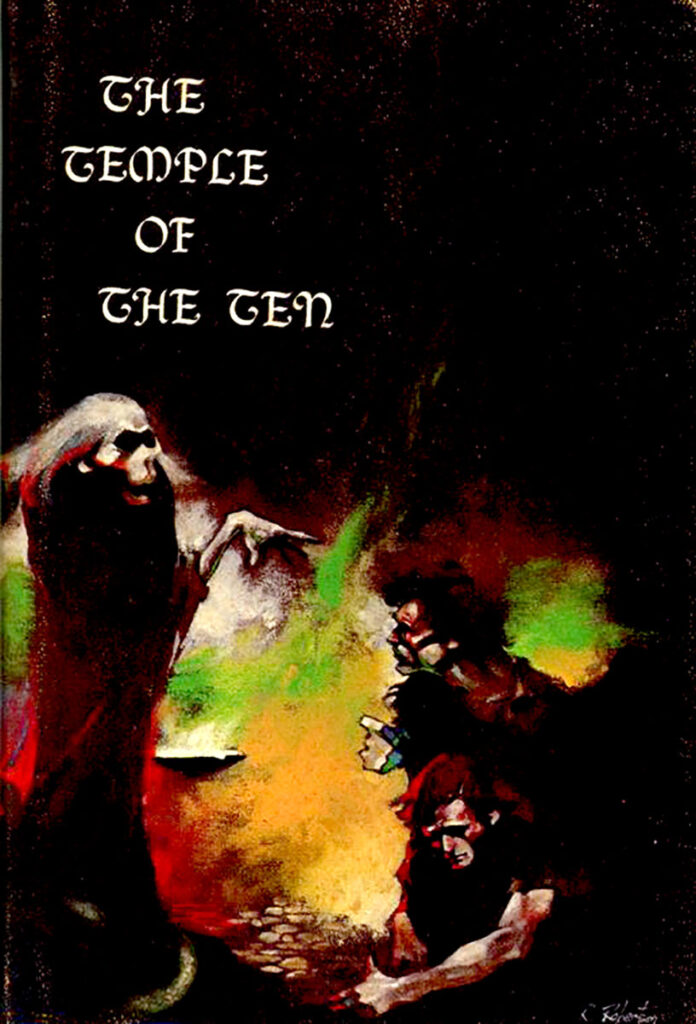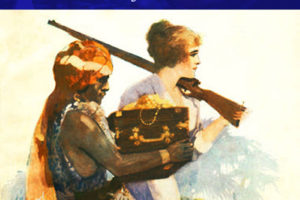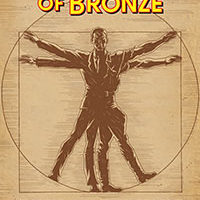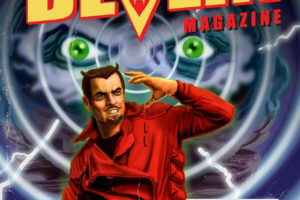“The Temple of the Ten” is a great, if flawed, adventure tale from H. Bedford-Jones and W.C. Robertson that first appeared in Adventure in March 10, 1921. It was later reprinted in hardcover by Donald M. Grant in 1973 with a color cover and frontispiece and several black-and-white interior pieces by Richard Robinson. Pulpville Press has reprinted this in paperback, using the color frontispiece as the cover. No idea if they included the other artwork by Robinson.
 I’ve posted on H. Bedford-Jones (1887-1949) several times. The prolific “King of the Pulps” put out hundreds of stories in several pulps, usually adventure and historical fiction stories, with some fantastical ones in the line of realistic lost-race stories. This is one of those.
I’ve posted on H. Bedford-Jones (1887-1949) several times. The prolific “King of the Pulps” put out hundreds of stories in several pulps, usually adventure and historical fiction stories, with some fantastical ones in the line of realistic lost-race stories. This is one of those.
W.C. Robertson is a bit more a mystery. While Bedford-Jones had a few collaborators, he also had several fictional collaborators, non-existent people who’s presence giving some versimatude to his works. While W.C. Robertson appears to be a real person, including letters to Adventure telling of his travels, it’s believed that either he was non-existant or possibly hid William Wallace Cook, another writer and creator of Plotto who had encouraged Bedford-Jones to become an author. The “W.C” possibly being a nod to William Cook. W.C. Robertson “collaborated” with Bedford-Jones on four works in Adventure in 1920 and 1921, and one in Short Stories in 1922.
Adventure made a point of published authentic adventure tales, though did do some “off trail” stories. This one, dealing with an expedition in Asia finding a lost city tied to Prester John, is one such. The element of telepathy sets it apart from other more realistic lost-world/lost-race stories that Bedford-Jones does and that Adventure preferred.
Our story starts with a bang, as we met one of our main characters, Severn, a researcher who has been on expedition in Asia for the last year. His wife has died along the way, as well as the rest of the group. He finds himself ambushed and surrounded by hostile Mongols, down to his last two bullets, when a new group arrives. It’s a group of Sikh troopers lead by a trio of men. They are able to kill off his ambushers, and he discovers his rescuers: Kilgore, Day, and Sir Fandi Singh. Severn had previously met Kilgore. They are leading a group to finding the “Temple of the Ten Dromedaries,” while another Sheng Wu, is leading a caravan with supplies by another route. Severn joins them.
The Temple is run by a group of 10 priests with 10 novices. They command a hill tribe called the Darkan, of which the group surrounding Severn are part of. These are not nice people. The Darkan bring to the priests a group of 10 tribute girls every few months. The prior group is tossed into volcanic fissures. And the priests are controlled by someone known only as Esrun, who is in communication with them via telepathy.
The Temple is in a hidden valley known as the “whirling sands,” and is part of the largely deserted “City of the Whirling Sands.” Nearby in a connected valley is the “Lake of Singing Fish” in a valley of purple grass.
The group makes it to the Temple and are able to ambush the priests. They learn that a group lead by five novices had attacked the caravan and made off with the supplies. The other five are bringing the next group of tribute girls. They ambush them when they get to the temple and free the girls, but they know their relief caravan is not coming. In the mean time, Severn examines the Temple and realizes that its the church of Prester John, who was clearly a Buddhist Lama who had converted to Christianity. The Darkan are the remains of his tribe, clearly fallen from what they were.
Severn and Sir Fandi Singh head to investigate the Lake, while the rest secure the Temple. Severn plans on trying to communicating with Esrun via telepathy saying the priests need money and see what happens. A strange cloaked figure approache the boat with a bag of gold. They discover it’s an aged and blind leper woman from India. Is this Esrun? Fandi Singh is shot, and Severn shots the woman. Trying to save Fandi Singh, Severn gets a cut on his hand from a blade of purple grass and gets a fever. He is able to save Fandi Singh and gets back to the Temple before he collapses, but finds all the Sikh mysteriously dead, and Kilgor and Day missing! What happened?
They are saved when Sheng Wu shows up with the caravan! He and his men fled when attacked, and then attacked the novices when they weren’t expecting it, getting back their goods. Sheng Wu amputates part of Severns arm, and patches up Fandi Singh and they head out. Once they are close to Urga, the three decide they will return to the City and Temple and find out what happened to Kilgore and Day.
What will they find? Was the aged blind leper Severn shot Esrun, or does Esrun still exist? Who or what is Esrun? What happened to Kilgore and Day and will they succeed in finding them and will they be able to get out of there alive?
This is a good tale, and it doesn’t fit what some might expected. No super science city or highly spiritual culture, but a group that has fallen into more baser means. Nor is there a benevolent or beautiful ruler, but something else. There is a big plot hole in my view, once you understand who Esrun is. While I can accept telepathy in such stories, how did she come to have the power, as well as the priests and how did she come to her position? But if you set that aside, an interesting story.
I wonder when Steeger Books will get around to reprinting it? I think what might be interesting would be doing a single volume that reprints all five of the W.C. Robertson “collaborations,” with an intro explaining who it’s believed “he” was, maybe including the letters in Adventure that claimed to be from him. Too often when works are reprinted from Adventure, they don’t include these extra items.




Your comments